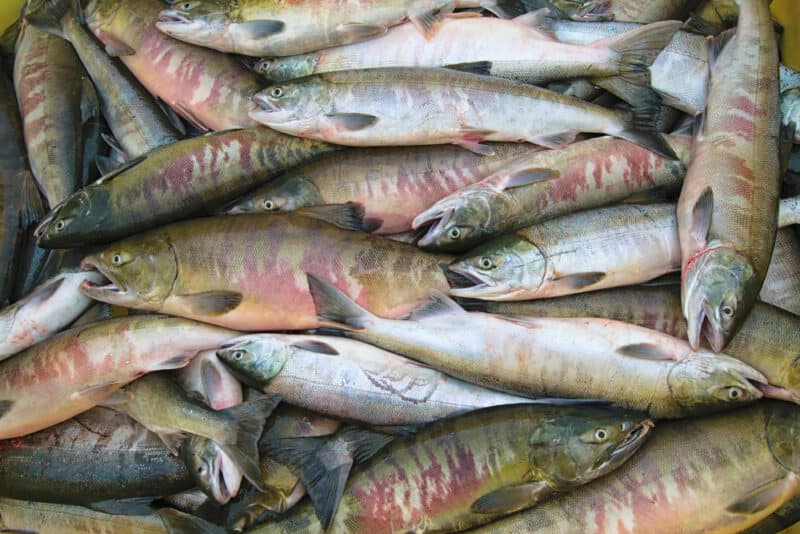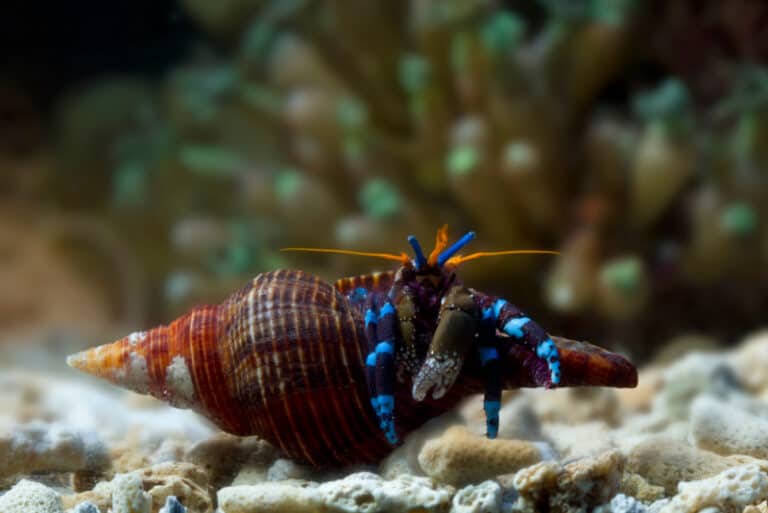What is Fish Chum and Does it Actually Work?

Fish chum is the secret weapon of every expert angler. And if not a secret, it’s the first thing that most novice fishermen learn to do after they see the locals catching fish after fish when they have had no luck at all.
It’s general knowledge that using chum or burley to attract fish will increase your chances of catching something. Fish chum, ground bait, or fish burley can be used to attract fish and get them in a feeding mindset, or even a feeding frenzy because fish are not located wherever you lay your line.
What is Fish Chum?
World-wide, chum is used by fishermen as a fish attractant. To catch fish, fishermen first produce a stinking slick in the water (thus the phrase “stink bait”), then wait for the fish to arrive.
Dispersing a large quantity of chum into the water to lure fish to a specific area and increase feeding is known as chumming. The bait fish and the game fish you’re after will both be attracted to the stinky bait. There are species where this method is crucial to a successful day on the water. It can be the difference between a good day of fishing and a spectacular day.
The Basics of Chumming
It takes around 15 to 20 minutes for the bunker to accomplish its job and attract fish once it has been originally dispersed into the water. Pay close attention to the water’s surface; whenever you spot movement, usually fish approaching, cast your baited hook into the chum slick and get ready for some fun. You could have chosen the wrong area if you wait a while without getting a bite. Your offering can be redistributed by simply moving to a new location.
Don’t Use too Much of a Great Thing
If you distribute an excessive amount of chum, the fish will be preoccupied with eating on the slick and will have no interest in the bait that is on your hook. If you don’t scatter the bait widely enough, the fish won’t stay in one place for long enough to be hooked. A “steady light stream” in your chum slick should be maintained so that fish continue to congregate there and you can have uninterrupted action.
It Depends on What you Hope to Catch
How far does the fragrance of your ground bait have to travel before the fish start biting? Species differences aside, sharks can detect as little as one component of blood per million parts water.
While not all fish share the same olfactory capabilities, you can bet that a small amount of stink bait will attract even the most oblivious of predators from a great distance. There are different chum strategies, components, and distributions effective for different fish, environments, and purposes. But one thing is a constant – I never leave the pier without this lethal tool.
What is Fish Chum Made From?
Fish chum, also known as stink bait, is made of fish entrails and other tasty morsels that have a fishy alluring odor. Stink bait is typically made up of blood and oily fish pieces, both of which contribute to the noxious odor of decaying fish in the water. There is a wide selection of stink bait available, including:
- Frozen chum that is available in pre-packaged blocks of varying sizes
- Dry chum, groundbait, and burley is available in convenient pre-packaged form
- Attractants that come in bottles of liquid or gel
- Frozen or fresh stink bait created at home
- Fragments of dead animals or live bait fish
- Fleshy fish bodies strung together on a thread
- Crushed crustaceans, cephalopods, cephalopods, sand fleas, or worms
- A sick fish hanging on a line in the water
- Menhaden Oil that creates a slick
- Frozen or canned fish
- Items such as cracked corn, bread, oats, pet food, and chicken carcasses
Fresh is Always Better
In most cases, fresh stink bait is preferable to frozen since it is more efficient and easier to utilize. Many seasoned fishers, though, have their own secret concoctions and refuse to reveal their formulas. Fresh chum can be made using dozens of different ingredients.
Getting Ready to Chum
The Basics
While there are as many chum recipes as there are serious anglers, here are the essentials item you need to get started:
- Tropical fish food (50 lb bags of Purina Tropical Fish food from your local feed store)
- Something to store the powder in, preferably a bucket with a lid
- Cast nets
- Menhaden oil
- Water
- A chum bucket
Use a tropical fish food mixture when fishing shallow grass flats up to 18 feet of water. When you throw the chum in the water, it falls apart and spreads out so the bait can smell it.
Making your chum
- Put three to four handfuls of the Tropical fish food powder in a bucket.
- Add water but not too much lest the chum gets too watery. Chum works best if it has the consistency of mud. I start by adding just a few handfuls to the bucket at a time. You want it to be thick, so when you throw it in the water, it breaks apart and spreads out.
- Add the secret ingredient, menhaden oil. Add a couple squirts of the oil and mix it in.
- Ball it up into small balls and get ready to toss
More about Menhaden Oil
When processed, the fatty oil extracted from menhaden fish has a strong, unpleasant (except for other fish) odor. Whether used alone or in a chum blend, menhaden oil is an effective fish attractant.
Emulsified and concentrated menhaden oil is called “menhaden milk,” and it is water miscible, meaning it mixes well with water in any concentration. Because of its neutral buoyancy, it can mix with water and move through the water column rather than rise to the surface.
The menhaden fish, often referred to by a variety of other names, is a member of the herring family and is found in the Gulf of Mexico and the Atlantic Ocean. It is a little bait fish that may be found from inshore estuaries all the way out to the Atlantic shelf. Estuaries are the places where menhaden give birth to their young, which are referred to as “peanut bunker.”
Both the Atlantic Menhaden and the Gulf Menhaden have distinctive tails: one is grayish, and the other is brilliant yellow. You can catch menhaden from the Gulf of Mexico all the way to the Gulf of Mexico in Louisiana. The native range of the Atlantic menhaden is from Jupiter Inlet in Florida to the Strait of Canso in Nova Scotia.
Even the most daring foodies would often avoid menhaden because of its strong odor and bony texture. You may easily “smell” a neighboring school if the wind is blowing in the right direction because of their distinct odor.
Watch out for…
Keep an eye out for the phrase “cold pressed oil,” which indicates that the oil was produced using a cold extraction method, which results in a more robust flavor. This oil makes an excellent addition to the recipe for homemade fish chum that you have, and you can also use it to marinate your bait or to use it on its own with a drip dispenser.
Chumming Tips
It’s important to consider the tide, the direction the water is moving, and the rate at which the chum descends when deciding where to throw the chum. Anchor up current of the bait if the tide is going out, then toss your chum toward the front of the boat so it has time to sink and be smelled by the bait. The bait should be clustered together off the boat’s rear, making it easy to just drop the net on top of them.
If the chum becomes too watery, just add more of the tropical fish food to make it thick again.
If you kill your bait or come across new bait to chum up later in the day, you can use the chum you saved from earlier in the day. At the end of the day, you should throw away your chum mixture. Trust me, your neighbors will thank you.
Also, remember to always replace the cover after each usage of your chum bucket. Don’t expose it to the damp. Put it away in a safe place.
A Word About Rules and Regulations
In some situations and places, chumming is forbidden or outright illegal. Before chumming, make sure you comply with all laws and event guidelines in your area. If you throw out too much chum in the water, you could get fined a lot of money. Chumming is generally prohibited in:
- Fishing piers and bridges open to the public
- Lakes and dams that store drinking water
- Competitions for fishermen (some shark tournaments allow stink bait)
- You want an official world record fish
- The inherent risk makes chumming for sharks illegal on all beaches and in many other settings.
- The practice of chumming is prohibited in some places, including national parks and wildlife refuges.
You can also read:






